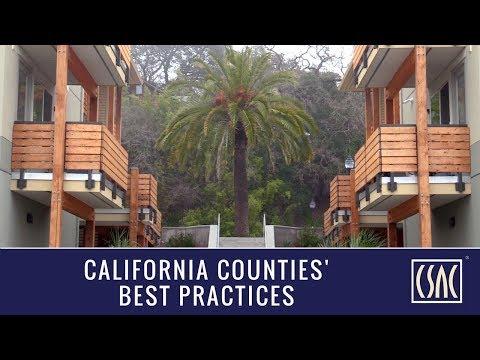Sonoma County’s Density Bonus Program Helps Ease the Housing Crisis
 Sonoma County was dealing with a housing crisis well
before the October 2017 firestorms. Rental occupancy was at 99
percent and people who worked in hospitality and agriculture were
traveling longer and longer distances to find housing they could
afford. Then came the fires that destroyed more than 5,000 homes
in Sonoma County alone. Thousands of people in the region have
been displaced, rents have gone up and finding an affordable
place to live has become even more difficult.
Sonoma County was dealing with a housing crisis well
before the October 2017 firestorms. Rental occupancy was at 99
percent and people who worked in hospitality and agriculture were
traveling longer and longer distances to find housing they could
afford. Then came the fires that destroyed more than 5,000 homes
in Sonoma County alone. Thousands of people in the region have
been displaced, rents have gone up and finding an affordable
place to live has become even more difficult.
“After the fires, we’ve gone from crisis to Armageddon,” said Tennis Wick, the Director of Permit Sonoma, the county’s building department. “We’ve lost 10 percent of the housing stock in the county and we have a need to replace thousands and thousands of units.”
Sonoma County’s Rental Density Bonus program was making a dent in the crisis before the fires. In the aftermath, it has become an even more important tool. “The density bonus program helps us meet that need for low and very low-income housing units that otherwise, the market would not provide,” said Wick. The program, which far exceeds state requirements, recently received a CSAC Challenge Award, given to recognize innovative and effective county programs.
California law requires local jurisdictions to offer a “density bonus” as an incentive to developers to build more affordable housing. The developer agrees to designate a percentage of the units in a given development as “affordable homes” and in exchange, they can build 25 percent more units per acre than the local zoning typically allows. Sonoma County has embraced that concept and taken it several steps beyond the minimum requirement, allowing developers to double the density of their project if they devote 40 percent of the units to people whose income is 50-60 percent of the median in the area.
Meet Melissa Canaday. She was at ground zero of the housing crisis in Sonoma County. She had become homeless after an injury and hospitalization caused her to lose her job. With not enough income to afford a place to live and limited options to go anyplace else, Melissa was living in her car. She was one of more than 800 people who applied to live in one of the 60 units at the Fetters Apartments, built by MidPen Housing along Highway 12 in Sonoma County. MidPen, a not for profit developer of affordable housing, used the county’s Rental Density Bonus program to increase the number of units they could build there.
Melissa was one of the lucky ones. She pays $659 a month to live at Fetters, about a third of what market-based rents are in the Sonoma area. “It’s such a blessing,” she said. “I got my life back. I’m getting my health back. You know living in your car, at my age, I’m in my fifties, it’s really difficult.”
“Without the density bonus program, we wouldn’t have been able to get this project off the ground,” said Riley Weissenborn, from MidPen Housing, the not-for-profit developer that built the Fetters Apartments. They had already received a zoning amendment that would have allowed them to build 30 units on the Fetters site. The Rental Density Bonus doubled that to 60, reducing the per-unit costs.
“The same economic principles that apply to the production costs, also apply to the long-term feasibility of the project,” said Scott Johnson, Principal at SWJ Housing. He also worked on the Fetters project. “The more density, the lower the cost, and the greater the feasibility,” said Johnson. “We were able to create a very livable community at the density required to support affordability and to sustain affordability. Affordable housing is fundamental to a healthy, sustainable, stable community and that’s what we’re trying to create here in Sonoma County.”
Many regions in California are suffering from a housing crisis similar to Sonoma County. People have to travel farther and farther between their job and an affordable place to live. There are no easy answers, but in Sonoma County, the Housing Density Bonus Program is a large and growing part of the solution.
This Sonoma County program is a recipient of a 2017 CSAC Challenge Award, which spotlights the most innovative programs in county government. The Call for Entries for the 2018 awards is now open.












































